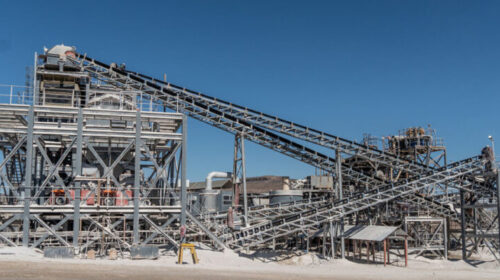Aluminium demand growth will soon outpace production growth
Research agency Fitch Solutions Country Risk & Industry Research says the global primary aluminium market will remain largely in oversupply, owing to absolute production remaining higher than consumption this year, but the surplus is likely to start narrowing from 2021.
This will remain the case up to 2024, before widening again from 2025.
From 2025 onwards, Fitch expects the market oversupply to widen again, as demand will benefit from construction industry growth in key countries and the growing recognition of aluminium as a lightweight substitute for steel in automotive.
Fitch further explains that global aluminium production will continue to rise over the coming years as higher prices incentivise producers to ramp up output.
In the near term, the agency forecasts output to grow by 2% year-on-year in 2021, compared with 2.7% in 2020, as aluminium prices slowly recover from the slump during Covid-19, which caused producers to reduce output.
The global aluminium demand picture will be stable over the coming years, driven by steady demand growth in Asia and the growing application of aluminium in industries such as automotive and aerospace.
Nevertheless, global demand growth will gradually slow compared with preceding years as Chinese economic growth and, therefore, demand for metals through automotive and infrastructure ticks lower.
We forecast global aluminium consumption to increase from 64.2-million tonnes in 2021 to 78.4-million tonnes by 2029, averaging 2.6% annual growth.
“Over 2021, we forecast consumption demand to grow by 3.3% year-on-year up from a contraction of 1.2% year-on-year in 2020,” the agency says.
Protectionist policies in the US increasingly threaten to disrupt global aluminium trade flows as the US is the largest global importer of aluminium. Owing to ongoing policy uncertainty, Fitch views these developments as downside risks rather than a core view.
China’s aluminium production growth will slow down over the coming years as the government’s push for consolidation and stricter environmental regulations takes higher-cost and less efficient capacity offline.
However, this will not result in an outright decline in absolute output over the coming years and China will remain the driving force behind global aluminium production.
This while Russia’s aluminium production will benefit next year from United Company Rusal’s resumption of the ramp-up at its Taishet smelter. The firm previously delayed activities owing to Covid-19 impacts.
Fitch forecasts Russian aluminium production to grow at an average 2% year-on-year in 2021, down from 2.3% in this year.
Meanwhile, Fitch expects China’s aluminium consumption to rebound to 1.5% year-on-year growth in 2021, amid an uptick in real estate and infrastructure investment, but may see a slow down as the country’s economic growth loses steam in later years.
The agency predicts a rise in China’s total aluminium consumption from 36-million tonnes in 2021 to 39.8-million tonnes by 2029.
This while US aluminium consumption is likely to grow by 1.2% year-on-year in 2021 as automotive manufacturing resumes, recovering from the 5% contraction recorded in 2020.
Fitch says that India will be the stand-out growth market for aluminium consumption in coming years, since its long-term growth prospects in the construction industry are supported by the country’s sizeable infrastructure deficit and government driving investment in the sector.
The agency forecasts India’s aluminium consumption to increase from 2.7-million tonnes in 2021 to 8.7-million tonnes by 2029.
The automotive and aerospace sectors will increasingly support aluminium demand in key markets, as a lightweight – and therefore environmentally preferable – alternative to steel.
Several deals between automotive or aircraft manufacturers and aluminium producers highlight this trend over the past few years, such as Arconic’s multiyear supply deal with Toyota in 2017.
Aluminium integration will rise in more regulated automotive markets such as the US, the EU and Japan, although developing markets will also present growth opportunities.
Additionally, the accelerating shift towards electric vehicle adoption in select Asian and European markets will add upside potential to aluminium consumption, as automakers utilise the metal in structural parts and batteries.
source: Mining weekly
51 total views , 1 views today





